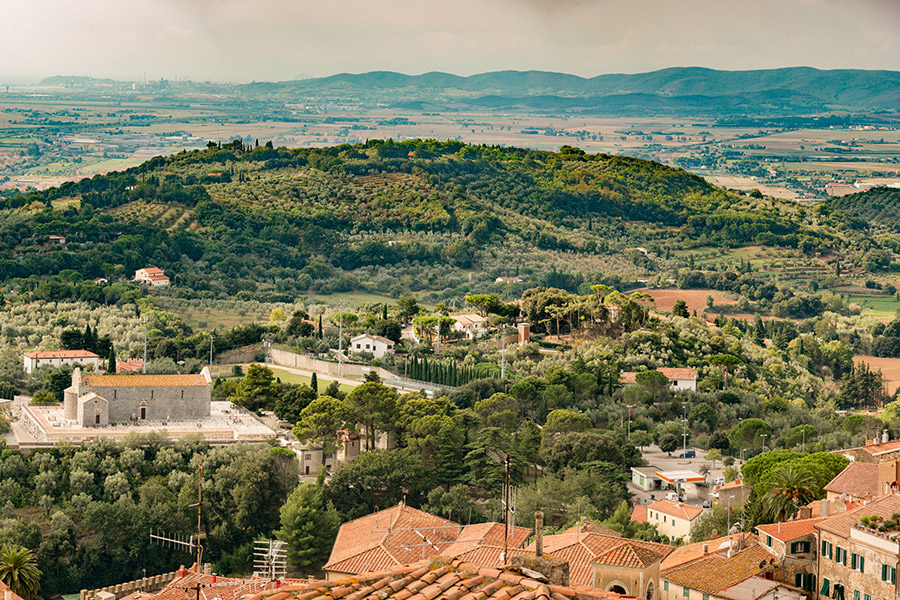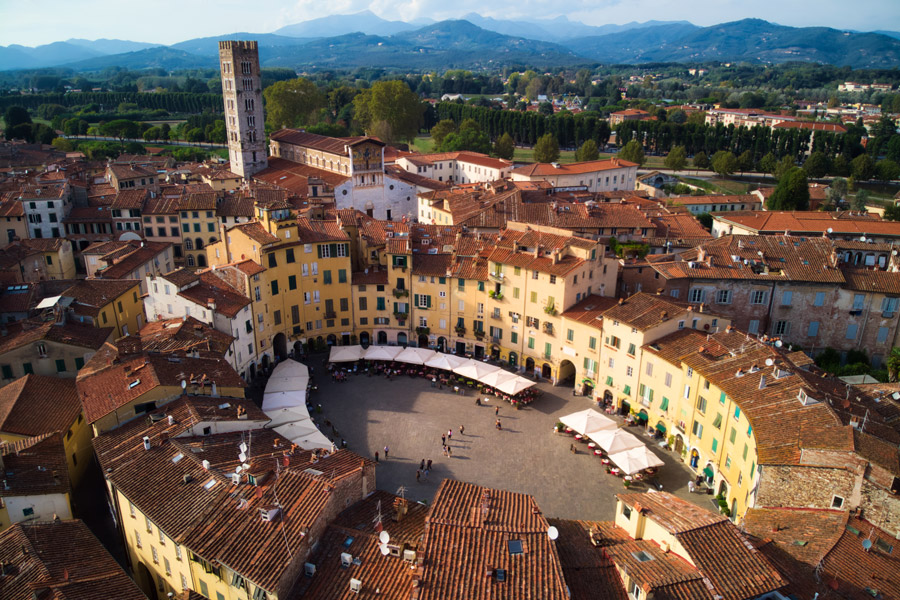Art Treasures in the Cradle of the Renaissance
From the Podere you can easily reach some famous Tuscan art cities to discover their historical and artistic treasures.
Campiglia Marittima (10 minutes by car)

The village was a castle of the Della Gherardesca family and then a Pisan captaincy until the Florentine conquest in 1406. The remarkable medieval historical centre is dominated by the Rocca and the Florentine Gate, the Praetorian Palace, the church of S. Lorenzo and the parish church of S. Giovanni are worthy of attention.
Suvereto (10 minutes by car)

In a landscape suspended between the sea and the metalliferous hills, Suvereto with its old houses, ancient roofs and craft workshops is the ‘capital’ of the Val di Cornia. As an old trunk that endures, like the quercus suber from which it derives its name.
Volterra (1 hour and 10 minutes by car)

One of the main city-states of ancient Etruria, it boasts exceptional artistic and archaeological testimonies such as the Museo Etrusco Guarnacci and the ruins of the marvellous acropolis of Piano di Castello, with a rich superimposition of structures from the Etruscan, Roman and medieval periods.
San Gimignano (1 hour 45 minutes by car)

Its 72 towers are the symbol of the city. The city walls surround the town, which can be entered through restored gates. This leads to the Piazza del Duomo, the monumental heart of San Gimignano, with the church of Santa Maria Assunta, the Palazzo del Popolo and the Palazzo del Podestà.
Siena (1 hour 30 minutes by car)

The city of the Palio and the contrade welcomes the visitor in a perfect setting with its precious Renaissance jewels. Not far away are the Via Francigena, the lunar landscapes of the Crete, the hills of the Val d’Elsa and Chianti, the undulating pastures of the Val d’Orcia, Mount Amiata, villages with legendary wines, hermitages and abbeys.
Pisa (1 hour 15 minutes by car)

The powerful and combative maritime republic bequeathed several masterpieces, such as the Cathedral, the Camposanto, the Baptistery and the famous Tower. Its artistic and cultural splendour did not diminish under the rule of Florence: under the Medici, the University of Pisa was strengthened by the creation of Europe’s first botanical garden and new churches were built.
Lucca (1 hour 30 minutes by car)

Lucca is striking for the harmony that unites buildings of the most diverse epochs in the urban fabric. Within the splendid mediaeval walls, the Cathedral of San Martino and the Church of San Michele dialogue with the museum heritage and with the modern streets and squares; even with the Guinigi Tower, which has a small holm oak forest on its summit, 45 metres high.
